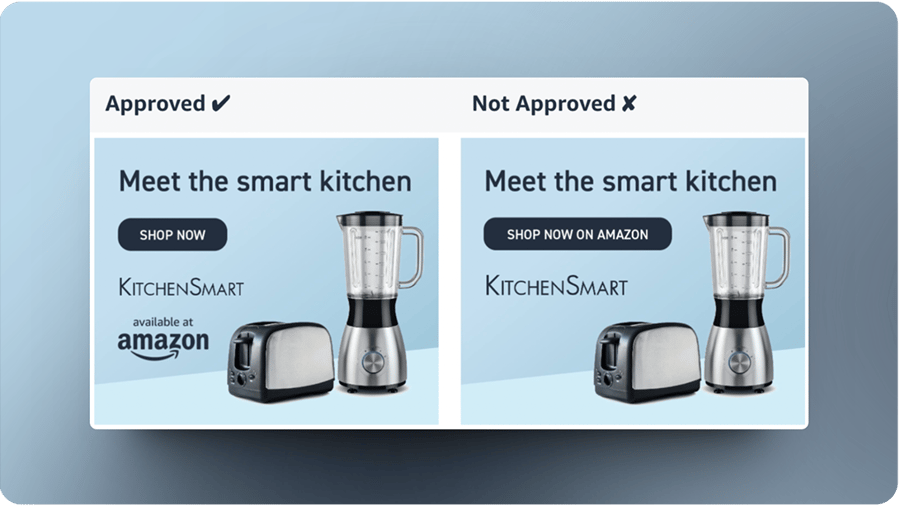
Digital First: How To Make Sure Your Brand Works on the Web and in the Real World

You’ve likely heard some version of the phrase “people buy with their eyes,” and this sentiment holds true whether consumers are viewing a brand’s offerings online or in person. In the battleground of capturing consumers’ attention, a digital brand strategy is encouraged and largely embraced. In a global survey conducted last year, respondents said 61 percent of their interactions with companies were carried out online—and that’s post-pandemic lockdown.
Considering this evolution in consumer behavior, many companies are waving their digital-first flag high, but let's not forget: What thrives online might fall flat in the physical world. Conversely, the personable approach and sensory experience of real-world brand interactions offer something unique that we can’t quite get from our screens. Brands may jostle for attention in the perpetual scroll, but in the rush to conquer the online universe, some forget the importance of straddling both worlds.
If your product can be sold online and in physical space, your brand should be seamlessly projected through both. Think of Apple—it’s hard to imagine the tech behemoth was ever in danger of falling out of favor, but in the early 1990s, consumers preferred the less-expensive Windows-operated computers over cutting-edge but pricey Apple models. Steve Jobs relaunched Apple’s design-forward brand and online store in 1997, and opened its first retail spaces in 2001. A cohesive, improved shopping experience was delivered across the digital and physical worlds, and the brand was back to turning profits, and has ever since.
A digital-first brand strategy is intuitive and obvious in today’s world. It's where the eyeballs are, where trends are born and where consumers are going to discover new products and services and research solutions that solve specific problems and fill niche needs. But the real winners in the brand strategy game are the ones who ace both realms. Their digital brilliance shines through their physical presence.
Challenges Connecting Digital and Physical Experiences
Seamlessly translating a stellar online experience into the real world, or capturing the magic of a personalized in-store shopping experience to your website, helps winning brands thrive. So, why isn’t everyone doing it? Consistency is king, but certain challenges come with creating a unified experience that builds brand recognition and favorability.
Let’s face it: We can’t all be Apple. Tech startups may find it challenging to showcase their products or services in a traditional retail setting. Businesses relying on subscription-based models may find it challenging to recreate the recurring revenue model in a physical setting. Effectively measuring ROI between the digital and physical worlds and bridging the gap between online and offline sales poses specific challenges as well.
Discrepancies in the customer experience certainly play a role. Your digital charisma might not translate when faced with real, sentient beings. After all, a charming GIF can’t replace a genuine smile, can it? Roadblocks with integrating technology into your physical presence and translating the human touch to your online spaces can create inconsistency.
Want a Seamless Brand Experience? Consider Your Audience.
Brands today need to offer a united experience across all channels. Consumers should be able to spot a logo, ad, commercial or display from feet away and be able to quickly identify the company. Digital experience should be a seamless extension of a brand’s physical space, but there also needs to be an understanding of specific audiences.
Local customers may have a certain flair or preference. Think of Dick’s Sporting Goods, for example, which may have a slight twist between its Pittsburgh and Cleveland stores. When you walk in its doors or visit its online home page in “the Burgh,” you may be met with black-and-yellow Steelers merchandise front and center, but offering this same experience in Cleveland is likely to lose you sales (and earn you some angry customers).
Establishing a brand's presence online and in physical spaces involves an approach that considers current shoppers and target customers. Interaction with potential customers in the digital space is often asynchronous and occurs through channels like social media, websites and email. Brands can engage with a global audience in real-time, but may struggle to create those meaningful, personal, face-to-face connections.
But remember: You can't simply press "Ctrl+C" on your online charisma and expect it to magically manifest offline. Think of Apple stores again—part of the excitement of walking into those distinct spaces is the ability to “play” with new products, walk up to the Genius Bar with questions or issues and speak with a Apple rep face-to-face.
In physical spaces, interactions are typically synchronous, allowing for immediate and personal engagement. Brands can connect with their local communities and build relationships through in-person experiences. While some brands may view their physical presence as limiting, as it can only reach the audience that’s standing right in front of it, it allows for a more concentrated and targeted approach, and this personalization lays the groundwork for connection, brand recognition, loyalty and trust.
Building trust online often involves establishing a strong brand reputation through reviews, testimonials and social proof. In the real world, trust can be built through face-to-face interactions, providing a more immediate and personal connection. Physical locations can enhance the credibility of a brand.
Brands can reach a larger global audience with minimal geographical constraints in the digital realm. Online platforms enable broad exposure and access to diverse markets. But the real winners in the brand strategy game are the ones who ace both spaces. They’ve got the online mojo and the offline charm. Their digital brilliance shines through their physical presence. It’s like meeting a celebrity in person and discovering they’re even cooler than their Instagram persona.
It's the elusive unicorn of marketing—seamless, effortless and downright impressive.
Communicate Your Brand Narrative Everywhere
As organizations navigate the intricacies of our contemporary, digital-first landscape, they find themselves immersed in endless tactical considerations, such as SEO, PPC, UX, ABM, inbound and outbound strategies. While these tactical approaches are undeniably crucial for success in the digital age, the true power lies in their integration within a comprehensive brand strategy. It's not just about executing individual tactics but rather orchestrating them harmoniously to reinforce and amplify an overarching brand narrative.
In essence, the future demands a strategic fusion of the tactical and the narratival, where every SEO tweak, PPC campaign and UX enhancement online becomes a deliberate stroke in the masterpiece of your brand. This holistic approach not only maximizes the impact of individual efforts, but also fortifies the foundation for a sustained and resonant brand in an ever-evolving business landscape.
Consistency across all digital channels and physical spaces helps in building a strong and recognizable brand identity, regardless of where or how the consumer interacts with the brand. Digital-first brands can swiftly modify online content and adapt to changing trends and consumer preferences, making physical brand strategy seem daunting.
Concept stores and interactive displays that allow customers to experience products or services firsthand can be effective. The key is offering incentives to visit your brand at your desired locations (online or offline) based on your business goals, but maintaining a consistent story anywhere potential buyers land.
How can companies maintain a cohesive brand identity and narrative? Have a brand strategy that is tailored to your company's business plan. Start with these four tried-and-true moves:
1. Develop comprehensive brand guidelines that cover all visual aspects, including logo usage, color schemes, typography, imagery and messaging.
Amazon is a solid example of an easily identifiable brand both in its massive online marketplace and in its physical presence, which includes Amazon lockers, Amazon Basic branded products and its newly launched Amazon Fresh and Amazon Go grocery and convenience stores. The mega corporation published its brand guidelines for third-party sellers using Amazon as a digital selling platform, detailing usable and non-permitted brand elements down to the button color and word choice that consumers instantly identify with Amazon itself.

2. Ensure that every touchpoint a customer has with your company reflects the brand identity.
When most folks think of “golden arches,” only one fast-food giant comes to mind. McDonald’s has been a staple of consumer life for nearly a century, and its distinct logo, color scheme, slogans and “Mc” foods are synonymous with its name. McDonald’s has launched several digital initiatives over the decades, more recently using celebrities and less as spokespeople for the brand and more as influencers with menus in physical restaurants reflecting their ideal McDonald’s meals.
If someone is scrolling their favorite rapper’s Instagram feed, for example, and comes across a paid sponsorship post from McDonald’s, they can head to the nearest franchise and see that same rapper’s visage on the drive-thru menu. The brand’s mobile app also integrates the online and offline experience by allowing consumers to browse and buy their meals on their mobile devices and pick them up curbside, at the front counter or at a dining table. With millions of downloads and signage throughout each location referencing the app, the fast food giant is fusing its digital and physical brands seamlessly.
3. Stay agile and be willing to adapt your brand strategy if there are significant changes in the market or your business landscape.
The onset of the COVID-19 pandemic in 2020 presented a massive shift in how consumers discover, shop with and purchase from brands. Successful companies pivoted to the digital space when buying in-store was not possible. As gyms shut their doors and group exercise was forbidden, brands like Peloton excelled by offering the experience of in-person cycling classes to people in their homes. The exercise equipment brand’s sales rose 66 percent as it emphasized digital, streamed experiences available in its products while the global landscape changed.
4. Train your employees to be brand ambassadors. Ensure that they understand and embody the brand values and are capable of communicating the brand message consistently.
While fraught with some controversy over the last few years, there’s no doubt that Starbucks has been a standout for its easily identifiable branding and marketing campaigns that build a sense of urgency and “FOMO” among coffee lovers every season. Part of the Starbucks ethos is training its employees to become brand advocates, offering courses that reward new hires as “certified baristas” upon completion. Employees are called “partners” and are encouraged to participate in ongoing learning that covers the company’s brand values, including sustainability, inclusion, community and coffee culture.Your brand strategy should be a hybrid—digital-first with a side of real-world finesse. After all, in a world where screens dominate, a genuine human touch can make all the difference. By seamlessly weaving tactical threads into the fabric of your brand strategy, you not only harness the full potential of each component but also ensure a unified and coherent brand story online and offline. This approach transforms your brand from a collection of disparate activities into a cohesive and compelling entity, resonating consistently with your audience across various touchpoints.
At Kuno Creative, we understand the importance of creating a compelling brand identity that works well and translates across all channels. We work with leading companies to develop brand guidelines and strategies that guide digital campaigns, physical marketing collateral and, ultimately, a cohesive narrative that attracts and retains customers. Schedule a consultation to see what we can do for you.




